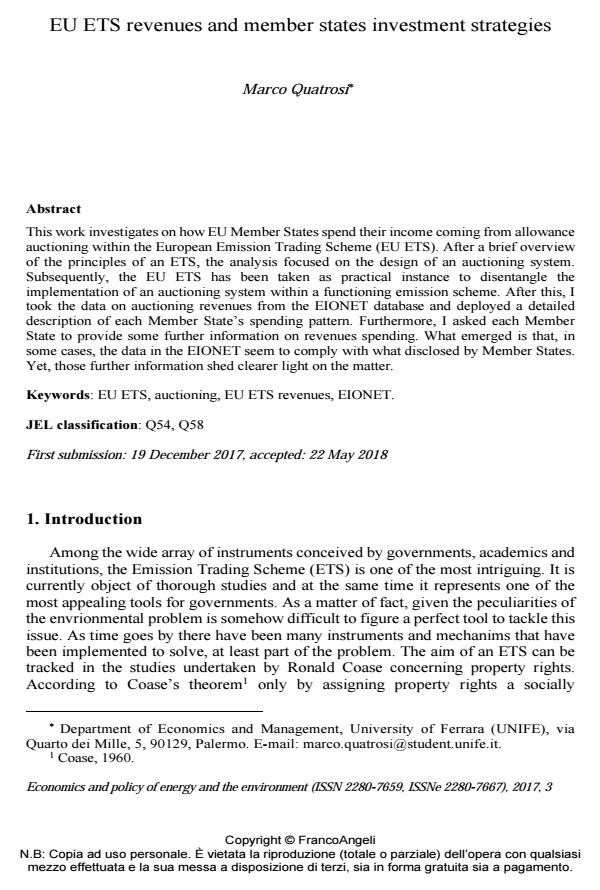EU ETS revenues and member states investment strategies
Titolo Rivista ECONOMICS AND POLICY OF ENERGY AND THE ENVIRONMENT
Autori/Curatori Marco Quatrosi
Anno di pubblicazione 2018 Fascicolo 2017/3
Lingua Inglese Numero pagine 17 P. 41-57 Dimensione file 265 KB
DOI 10.3280/EFE2017-003003
Il DOI è il codice a barre della proprietà intellettuale: per saperne di più
clicca qui
Qui sotto puoi vedere in anteprima la prima pagina di questo articolo.
Se questo articolo ti interessa, lo puoi acquistare (e scaricare in formato pdf) seguendo le facili indicazioni per acquistare il download credit. Acquista Download Credits per scaricare questo Articolo in formato PDF

FrancoAngeli è membro della Publishers International Linking Association, Inc (PILA)associazione indipendente e non profit per facilitare (attraverso i servizi tecnologici implementati da CrossRef.org) l’accesso degli studiosi ai contenuti digitali nelle pubblicazioni professionali e scientifiche
This work investigates on how EU Member States spend their income coming from allowance auctioning within the European Emission Trading Scheme (EU ETS). After a brief overview of the principles of an ETS, the analysis focused on the design of an auctioning system. Subsequently, the EU ETS has been taken as practical instance to disentangle the implementation of an auctioning system within a functioning emission scheme. After this, I took the data on auctioning revenues from the EIONET database and deployed a detailed description of each Member State’s spending pattern. Furthermore, I asked each Member State to provide some further information on revenues spending. What emerged is that, in some cases, the data in the EIONET seem to comply with what disclosed by Member States. Yet, those further information shed clearer light on the matter..
Parole chiave:EU ETS, auctioning, EU ETS revenues, EIONET
Jel codes:Q54, Q58
- The European Union Emission Trading System and its role for green budgeting development — the case of EU member states Kamilla Marchewka-Bartkowiak, in Current Opinion in Environmental Sustainability 101390/2023 pp.101390
DOI: 10.1016/j.cosust.2023.101390 - Handbook of Research on Climate Change and the Sustainable Financial Sector Kamilla Marchewka-Bartkowiak, Klaudia Jarno, pp.34 (ISBN:9781799879671)
Marco Quatrosi, EU ETS revenues and member states investment strategies in "ECONOMICS AND POLICY OF ENERGY AND THE ENVIRONMENT" 3/2017, pp 41-57, DOI: 10.3280/EFE2017-003003